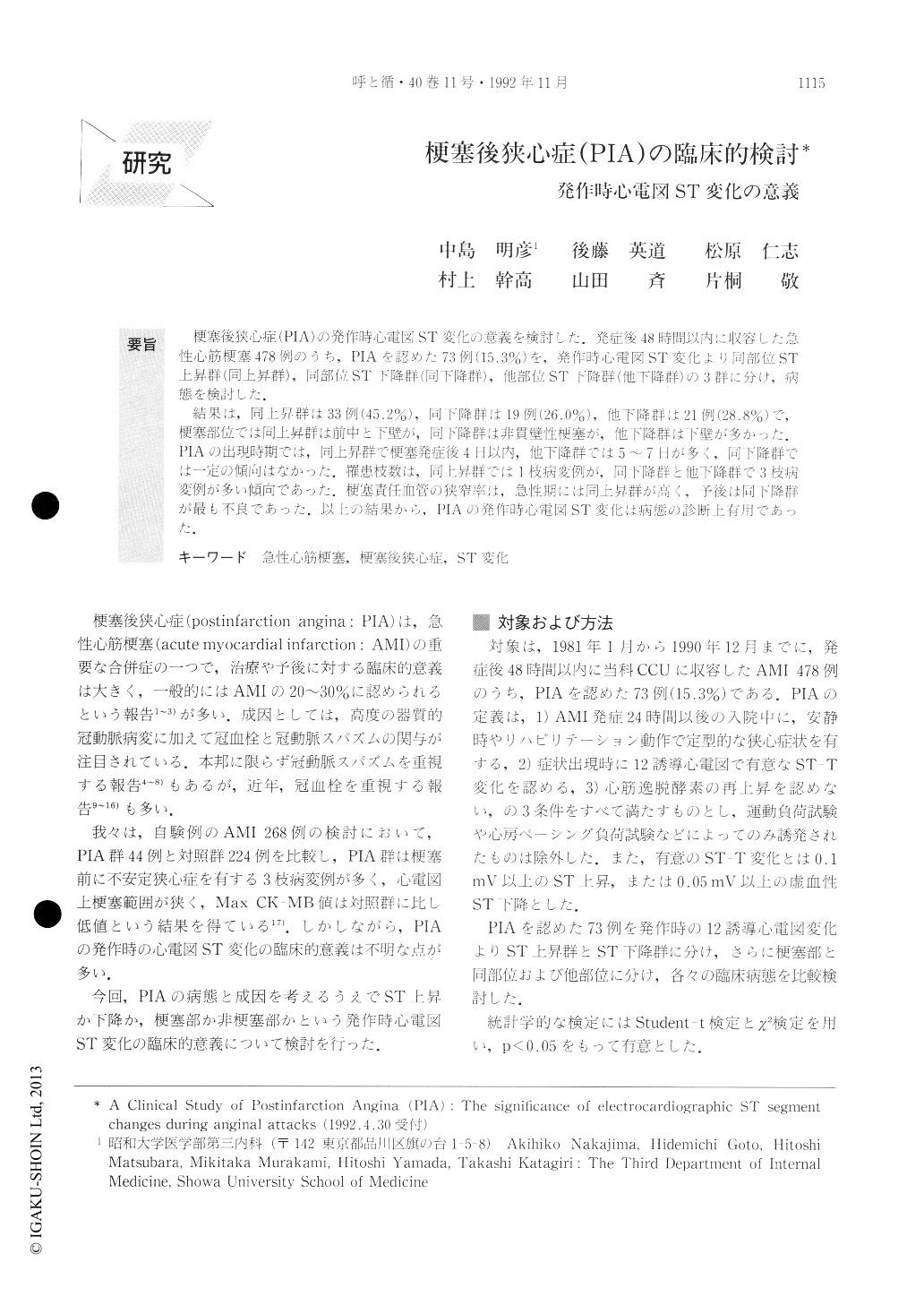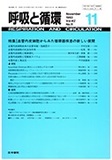Japanese
English
- 有料閲覧
- Abstract 文献概要
- 1ページ目 Look Inside
梗塞後狭心症(PIA)の発作時心電図ST変化の意義を検討した.発症後48時間以内に収容した急性心筋梗塞478例のうち,PIAを認めた73例(15.3%)を,発作時心電図ST変化より同部位ST上昇群(同上昇群),同部位ST下降群(同下降群),他部位ST下降群(他下降群)の3群に分け,病態を検討した.
結果は,同上昇群は33例(45.2%),同下降群は19例(26.0%),他下降群は21例(28.8%)で,梗塞部位では同上昇群は前中と下壁が,同下降群は非貫壁性梗塞が,他下降群は下壁が多かった.PIAの出現時期では,同上昇群で梗塞発症後4日以内,他下降群では5〜7日が多く,同下降群では一定の傾向はなかった.罹患枝数は,同上昇群では1枝病変例が,同下降群と他下降群で3枝病変例が多い傾向であった.梗塞責任血管の狭窄率は,急性期には同上昇群が高く,予後は同下降群が最も不良であった.以上の結果から,PIAの発作時心電図ST変化は病態の診断上有用であった.
We studied the clinical significance of electrocardio-graphic ST segment changes during PIA attacks.
Of 478 AMI patients admitted to the CCU of our hospital within 48 hours after onset, we evaluated 73 (15.3%) with PIA. According to electrocardiographic ST segment changes during PIA. attacks, the patientswere divided into three groups, namely ST elevation at the same infarction site (same site elevation group), ST depression at the same site (same site depression group), and ST depression at other sites (other site depression group), and their pathological condition was studied.

Copyright © 1992, Igaku-Shoin Ltd. All rights reserved.


